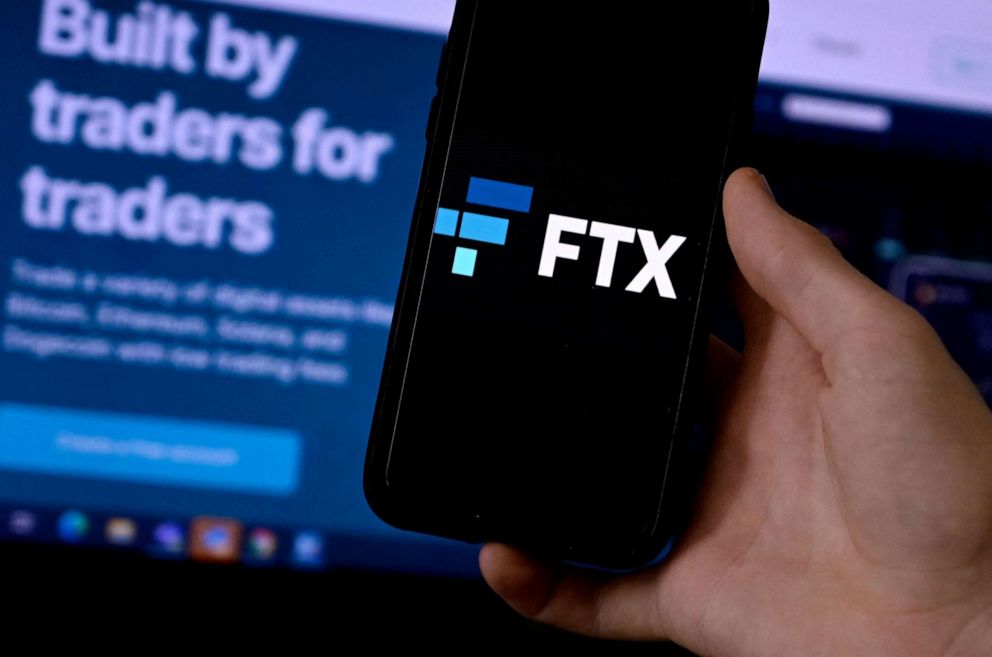How the $32 billion crypto company FTX collapsed and sent digital currencies
The cryptocurrency sector is reeling from the collapse of FTX, a digital currency exchange valued earlier this year at $32 billion and made famous by a Super Bowl commercial starring comedian Larry David.
Concerns about financial instability at FTX – a top platform where users buy and sell crypto – triggered a wave of customer withdrawals totaling billions of dollars. But FTX lacked sufficient funds to pay sellers, instead of stopping withdrawals altogether. On Thursday, FTX reopened withdrawals for some users, cryptocurrency news CoinDesk reported.
Nevertheless, some crypto traders on the platform cannot access their funds and may never get them back. The debacle coincides with a tough year for crypto, as the value of bitcoin has fallen more than 60%.
Sam Bankman-Fried, 30, a prominent crypto entrepreneur and CEO of FTX, apologized Thursday, saying he “should have done better.” Meanwhile, Gary Gensler, head of the Securities and Exchange Commission, responded to the crisis on CNBC with a call for strengthened crypto regulation: “Investors all over the world are getting hurt,” he said.
FTX did not immediately respond to ABC News’ request for comment.
Here’s what you need to know about the collapse of FTX and what it means for the future of cryptocurrency:
Why FTX collapsed
The fall of FTX centers in part on the cryptocurrency exchange’s close relationship with Alameda Research, a crypto hedge fund also founded by Bankman-Fried.
Major concerns about FTX started last week when CoinDesk published an article that found a significant portion of Alameda Research’s assets consist of FTT, a token created by FTX that allows users of the exchange to access discounted trading fees. Because FTT is relatively illiquid, the report raised fears among some about the capital reserves at Alameda Research and thus FTX.
Alameda could not be reached for comment as the site is currently dark.
“The fundamental risk is that if other investments in Alameda went under — and many crypto investments have fallen in recent months — they may not have been able to pay back funds to the exchange,” David Yermack, professor of finance at New York University. The Stern School of Business tells ABC News.
In response to the article, Changpeng Zhao, CEO of rival crypto exchange Binance, said on Sunday that he would sell the company’s $580 million FTT stake.
The big exit from a crypto heavyweight triggered a major sell-off totaling around $5 billion in a single day, putting enormous pressure on FTX to meet the sudden demand for withdrawals.
“It’s a lot like a bank run where there were rumors that the reserves of FTX were essentially not big enough to meet customer demand,” Yermack said. “People started queuing in large numbers to try to make a withdrawal from funds and deposits on the exchange.”
Due to lack of funds, FTX stopped customer withdrawals. On Tuesday, FTX entered into an agreement to sell itself to Binance, the crypto exchange whose leader had helped trigger the sale. But Binance pulled out of the deal the next day, leaving FTX in need of a way to raise money.

In this Feb. 10, 2022 file photo, a smartphone screen shows the logo of FTX, the crypto exchange platform, with a screen showing the FTX website in the background.
Olivier Douliery/AFP via Getty Images, FILE
Despite its financial problems, FTX is said to have reopened withdrawals for some users on Thursday.
What will happen next for FTX
To address the capital shortfall, Bankman-Fried said Thursday that he is trying to raise liquidity from a variety of financial entities. “My No. 1 priority — by far — is to get it right for the users,” he so.
Ultimately, FTX faces two potential paths out of the crisis, said Yermack of New York University. In a first scenario, FTX could try to sell itself to another firm, as it did in its attempt to merge with Binance.
Such a scenario is akin to the collapse of Bear Stearns during the 2008 financial crisis, when the investment bank sold to JPMorgan Chase at the bargain basement price of $2 a share, Yermack said. In this case, FTX is so concerned that it will likely have to pay a company to take on the balance, especially in light of general challenges in the crypto sector, he added.
“The climate in crypto is so bad that I’m not sure anyone would want to own the accounts and liabilities of an exchange like FTX,” Yermack said.
Another option available to FTX is to liquidate its holdings and potentially file for bankruptcy. “It wouldn’t surprise me if they had a liquidation of the business,” Yermack said.
In such an outcome, crypto traders who cannot cash out from FTX will potentially lose their money.
What it means for the future of cryptocurrency
The collapse of FTX offers a cautionary tale for cryptocurrency traders and investors.
Gensler, of the SEC, warned on CNBC Thursday that “the runway is running out” for firms in the sector seeking to avoid regulatory enforcement.
Eswar Prasad, a professor at Cornell University and the author of “The Future of Money: How the Digital Revolution is Transforming Currencies and Finance,” said the challenges of FTX could spur a regulatory effort.
“This episode and a few others before it will inevitably tighten regulators’ skepticism about this burgeoning ecosystem,” Prasad told ABC News. “It will increase their desire to shield the traditional financial system from this newly developed ecosystem.”
Turmoil is nothing new to cryptocurrency, however, Yermack said, suggesting that the sector could bounce back, as it has done after previous downturns.
“Volatility in this area has always been extremely high,” he said. “I can point to five or six dips in cryptoassets, and they’re always followed by big recoveries.”
“It’s not to say it will happen again,” he said. – Nobody knows what the future holds.


